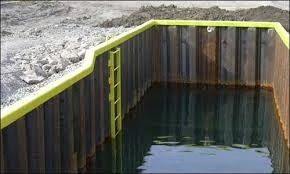RETAINING WALLS
Retaining walls are stabilizing structures that are used to maintain the earthern back. These are very useful to prevent soil erosion, slipping, etc. For more articles CLICK HERE
RETAINING WALLS
Retaining walls are vertical or vertical structures designed to hold material on one side, preventing it from collapsing or slipping, or preventing erosion. They support terrain that exceeds the resting soil of the soil, otherwise, it will collapse into a more natural form.
For safety reasons, retaining walls may include a flat surface over the height of the retaining material.
They may be independent structures, or they may be part of a wider construction process, such as a building.
CANTILEVER RETAINING WALLS
The retaining walls of the cantilever are fabricated from ferroconcrete. They accommodate a comparatively thin shaft and a base slab. The heel and toe are divided into two parts. The heel is an element of the bottom under the backfill. The toe is another part of the bottom.
Monolithic uses much less concrete than gravity walls but requires more design and careful construction.
Up to about 25 feet.
Can be precast in a very factory or made on site.
GRAVITY RETAINING WALLS
One type of retention wall that relies solely on its own weight to rise is called the gravity retention wall. This retaining wall is huge. When designing this type of retention wall, the sliding, bearing, and sabotage forces should be considered. This is most evident in dams or simple dykes.
COUNTERFORT RETAINING WALLS
The retaining walls of the counterfort are similar to the cantilever walls, which have thin vertical concrete webs at regular intervals along the back of the wall.
Counters connect the slab and the base, the purpose of which is to reduce the shear forces and the bending moment of the soil. The secondary effect is to increase the wall weight from the added be precast concrete. It can be precast or formed on site. Counterfort retaining walls are more economical than cantilever walls for heights above 25 feet.
SHEET PILE RETAINING WALLS
Sheet pile retaining walls are commonly used in soft soils and tight spaces. The walls of the sheet pile are guided to the floor and contain a variety of materials, including steel, vinyl, aluminum, fiberglass or wooden planks. Material for quick estimation usually leads to 1/3 of the ground and 2/3 of the floor, but this may change depending on the environment. Tall sheet pile walls require a tie-back anchor or "dead-man" placed in the soil behind the front of the wall, which is attached to the wall, usually with a cable or rod. Anchors are placed behind the aircraft with the potential for failure in the soil
ANCHORED RETAINING WALLS
An anchored retaining wall can be built in any of the above styles, but includes additional power by using cables or other accommodation anchored in rock or soil. Usually driven to boring material, the anchors at the end of the cable are developed by mechanical means or often by pressurized concrete, which develops to form a bulb in the soil. This technique is particularly useful when the technically sophisticated, high loads are expected or the wall is thin and very weak.





0 Comments
Please do not enter any spam link in comment box